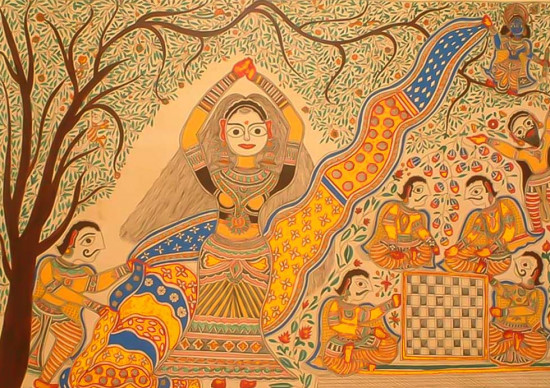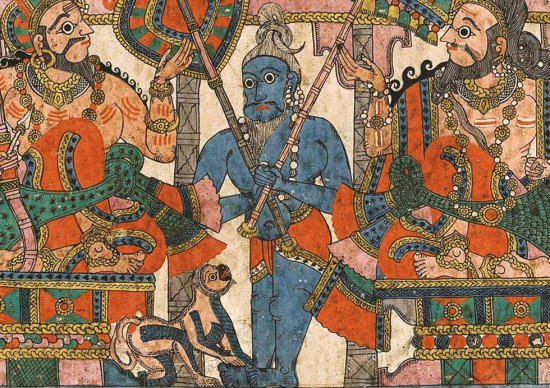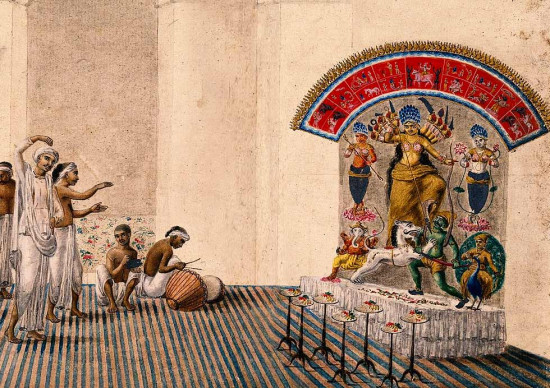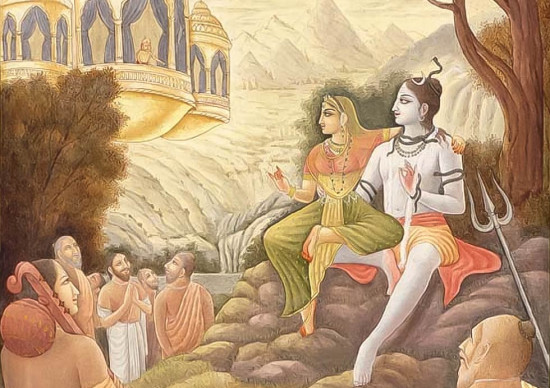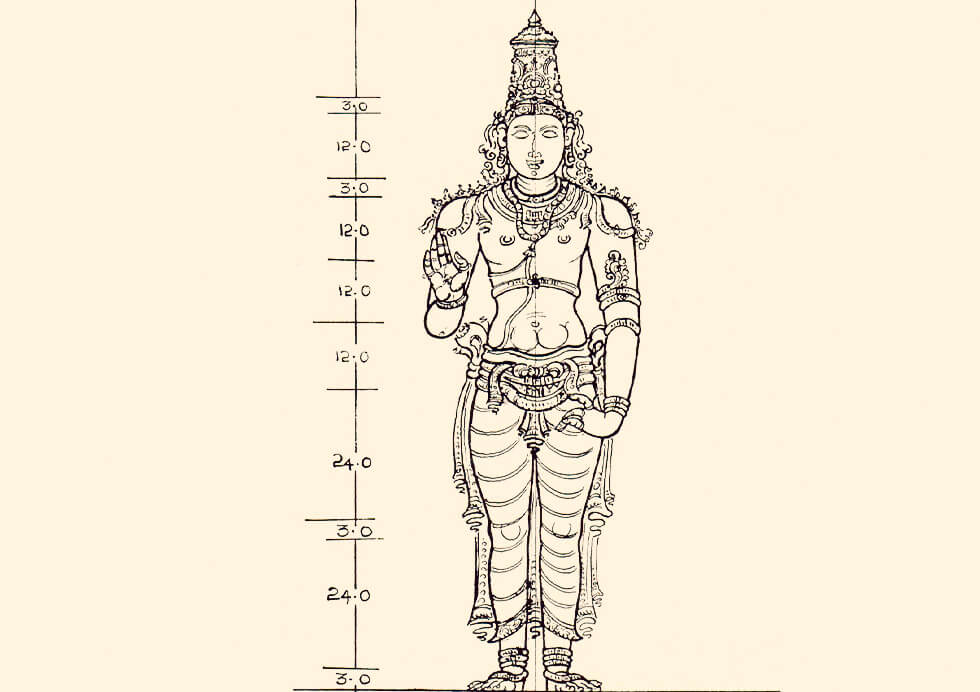
In the profound realm of Hinduism, the creation of idols, especially in adherence to the Shastric tradition, holds immense significance. This meticulous process is not a mere artistic endeavor but a sacred practice deeply rooted in ancient scriptures and teachings, guiding artisans in capturing the divine essence with utmost precision.
The Shastric way of creating idols involves a meticulous set of guidelines, ensuring that every aspect of the sculpture aligns with spiritual principles. These guidelines, often found in ancient texts like the Shilpa Shastras, govern the proportions, postures, and symbolism associated with each deity. Adhering to these principles is believed to infuse the idol with spiritual energy, making it a potent representation of the divine.
The significance of creating idols the Shastric way lies in the intention behind the craftsmanship. It is not merely about shaping a physical form but about channeling devotion, reverence, and spiritual awareness into every stroke and contour. The artisan becomes a conduit, translating spiritual insights into tangible representations that facilitate a connection between the worshiper and the divine.
The Shastric way of creating idols involves a meticulous set of guidelines, ensuring that every aspect of the sculpture aligns with spiritual principles. These guidelines, often found in ancient texts like the Shilpa Shastras, govern the proportions, postures, and symbolism associated with each deity. Adhering to these principles is believed to infuse the idol with spiritual energy, making it a potent representation of the divine.
The significance of creating idols the Shastric way lies in the intention behind the craftsmanship. It is not merely about shaping a physical form but about channeling devotion, reverence, and spiritual awareness into every stroke and contour. The artisan becomes a conduit, translating spiritual insights into tangible representations that facilitate a connection between the worshiper and the divine.

These idols, created through the Shastric process, serve as more than just visual aids; they become focal points for meditation and prayer. The meticulous attention to detail in their creation is believed to enhance the spiritual vibrations emanating from the idol, creating a conducive atmosphere for spiritual practices.
Furthermore, the Shastric tradition emphasizes the holistic approach to idol worship, incorporating rituals, mantras, and offerings into the process. Each element contributes to the sanctity of the ritual, fostering a deeper connection with the divine forces invoked through the idol.
Furthermore, the Shastric tradition emphasizes the holistic approach to idol worship, incorporating rituals, mantras, and offerings into the process. Each element contributes to the sanctity of the ritual, fostering a deeper connection with the divine forces invoked through the idol.
Why Create Shastric Idols?

-Deepening Meditation: Shastric idols act as anchors for focused attention, aiding in meditation’s practice. Gazing upon their form quiets the mind, fosters concentration, and facilitates deeper absorption into the divine realm.
-Unveiling Spiritual Growth: These meticulously crafted figures are not mere art; they are embodiments of divine energies. Their specific postures, gestures, and ornaments carry symbolic meaning, guiding us on the path of spiritual awakening and cultivating virtues like devotion and compassion.
-Channeling Mantras: Chanting potent Sanskrit mantras, infused with specific energies, becomes even more powerful when directed towards a Shastric idol. The form acts as a conduit, intensifying the mantra’s energy and directing it inwards, towards self-transformation.
-Connecting with the Unseen: The human mind grapples with the abstract. Shastric idols bridge this gap, offering tangible forms for deities that exist beyond our physical realm. These forms become focal points for devotion, allowing us to connect with the divine on a deeper level.
-Preserving Culture: Beyond personal practice, idol making and worship weave the threads of cultural heritage. Regional styles and iconography evolve over generations, reflecting unique artistic sensibilities and traditions. Witnessing and participating in rituals associated with murtis fosters a sense of community and belonging.
-Unveiling Spiritual Growth: These meticulously crafted figures are not mere art; they are embodiments of divine energies. Their specific postures, gestures, and ornaments carry symbolic meaning, guiding us on the path of spiritual awakening and cultivating virtues like devotion and compassion.
-Channeling Mantras: Chanting potent Sanskrit mantras, infused with specific energies, becomes even more powerful when directed towards a Shastric idol. The form acts as a conduit, intensifying the mantra’s energy and directing it inwards, towards self-transformation.
-Connecting with the Unseen: The human mind grapples with the abstract. Shastric idols bridge this gap, offering tangible forms for deities that exist beyond our physical realm. These forms become focal points for devotion, allowing us to connect with the divine on a deeper level.
-Preserving Culture: Beyond personal practice, idol making and worship weave the threads of cultural heritage. Regional styles and iconography evolve over generations, reflecting unique artistic sensibilities and traditions. Witnessing and participating in rituals associated with murtis fosters a sense of community and belonging.
Shastric vs. Non-Shastric Idols: Unveiling the Difference
-Material Matters: Shastric traditions prescribe specific materials for idol making, each carrying its own spiritual essence. Stone, metal, clay, and wood become vessels for divine energy, resonating with different vibrational frequencies.
-Symbolic Symphony: Every aspect of a Shastric idol – from posture to ornamentation – is imbued with deeper meaning. The lotus base signifies detachment from the earthly plane, while raised hand gestures convey protection and fearlessness. These symbols serve as visual reminders of spiritual lessons.
-Consecration for Connection: In Shastric tradition, idol making culminates in Prana Pratishtha, a ritual consecration that breathes life into the form. This ceremony awakens the idol’s spiritual potency, transforming it from a mere figure into a conduit for divine blessings.
-Symbolic Symphony: Every aspect of a Shastric idol – from posture to ornamentation – is imbued with deeper meaning. The lotus base signifies detachment from the earthly plane, while raised hand gestures convey protection and fearlessness. These symbols serve as visual reminders of spiritual lessons.
-Consecration for Connection: In Shastric tradition, idol making culminates in Prana Pratishtha, a ritual consecration that breathes life into the form. This ceremony awakens the idol’s spiritual potency, transforming it from a mere figure into a conduit for divine blessings.
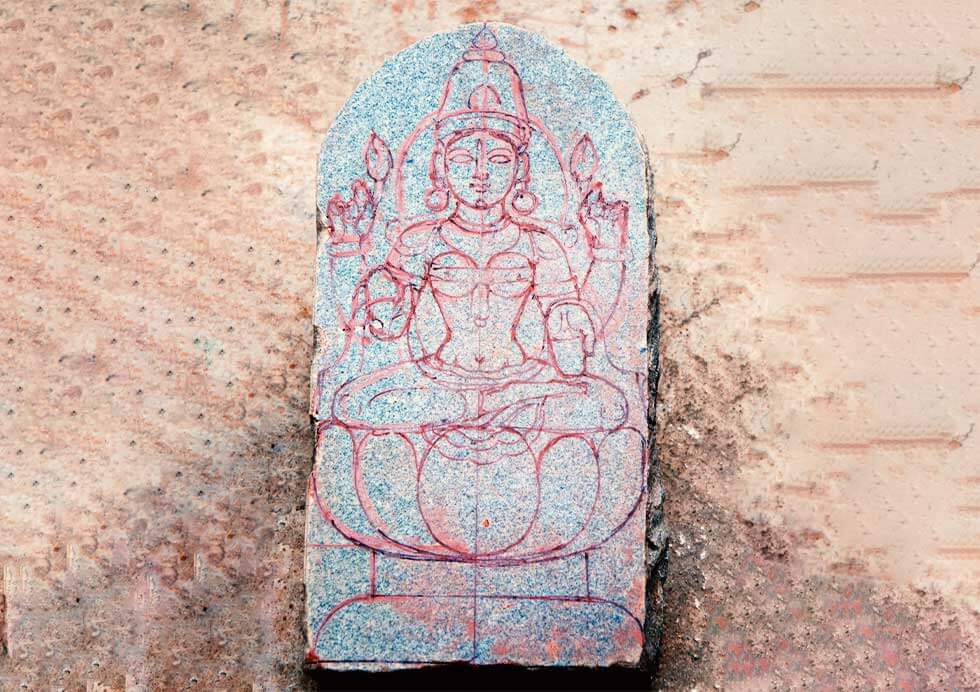
Shastric idols are not mere decorative objects; they are portals to self-realization. Their creation is a sacred act, an expression of devotion that transforms both the artist and the devotee. By understanding the deeper meaning behind this powerful practice, we can open ourselves to a profound spiritual journey, one that begins with a single, sacred form and culminates in the realization of the divine within.

